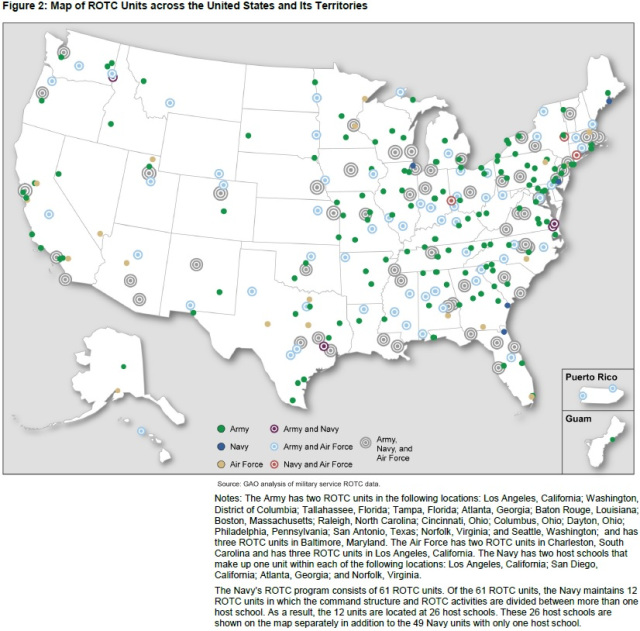Majoring in the Military with ROTC
Becoming a military officer takes serious preparation and training. Today’s WatchBlog looks at our review of the Reserve Officers' Training Corps (ROTC) program, the largest source of newly commissioned officers.
Origin of an officer
Nearly half of new active-duty officers come through ROTC, which is specifically designed to prepare college and university students to serve as military officers. In fiscal year 2012, 9,000 officers were commissioned from ROTC.
 (Excerpted from GAO-14-93)
(Excerpted from GAO-14-93)
Every state has at least one ROTC unit, and each of those may support students at more than one school.
 (Excerpted from GAO-14-93)
(Excerpted from GAO-14-93)
Feeling the pinch of college costs
How efficient is DOD’s handling of ROTC programs? Excluding tuition, the average cost per ROTC officer was about $68,000 for fiscal year 2012. Yet that rose to about $95,000 for units that produced fewer than 15 officers a year.
Cost is 1 of 5 major factors when DOD considers which ROTC programs to shutter. Despite recommendations for consolidations or closures, no closures had occurred when we examined the issue. One reason is that military services have had trouble garnering support for closures from key stakeholders.
The only time the military services consistently communicate with Congress or schools about ROTC programs’ performance is when closure decisions are being considered. Regular communication would help build trusting relationships and get buy-in, which could in turn improve the efficiency and effectiveness of ROTC programs.
To learn more, check out the full report.
- Questions on the content of this post? Contact Brenda Farrell at FarrellB@gao.gov.
- Comments on GAO’s WatchBlog? Contact blog@gao.gov.
GAO Contacts
Related Products

GAO's mission is to provide Congress with fact-based, nonpartisan information that can help improve federal government performance and ensure accountability for the benefit of the American people. GAO launched its WatchBlog in January, 2014, as part of its continuing effort to reach its audiences—Congress and the American people—where they are currently looking for information.
The blog format allows GAO to provide a little more context about its work than it can offer on its other social media platforms. Posts will tie GAO work to current events and the news; show how GAO’s work is affecting agencies or legislation; highlight reports, testimonies, and issue areas where GAO does work; and provide information about GAO itself, among other things.
Please send any feedback on GAO's WatchBlog to blog@gao.gov.




